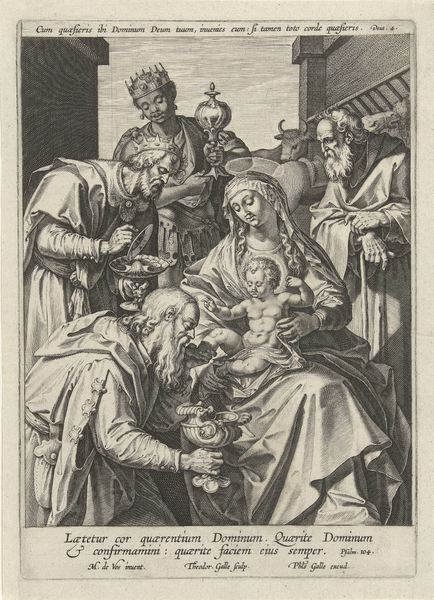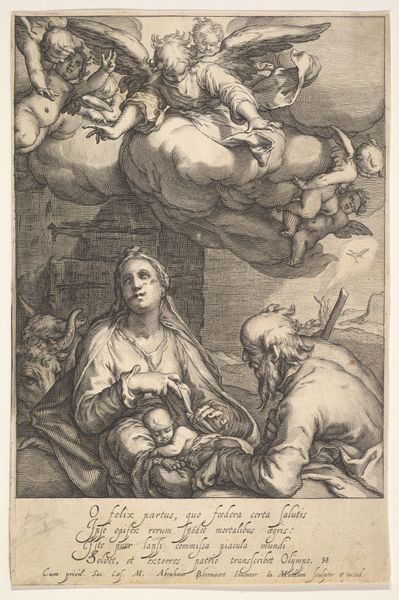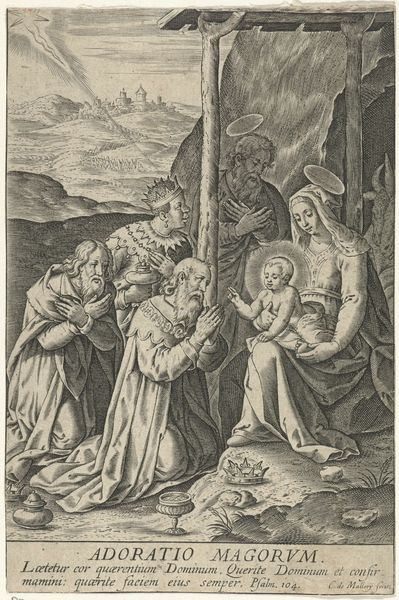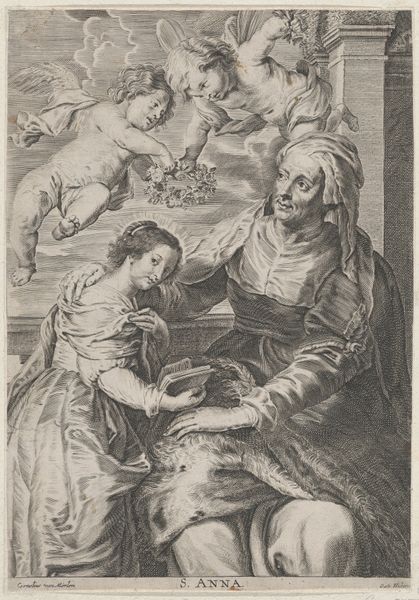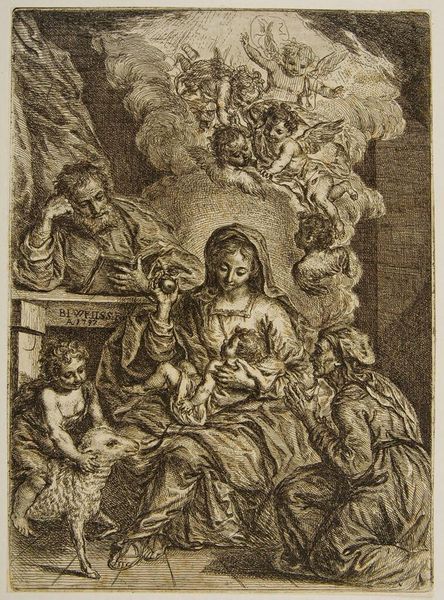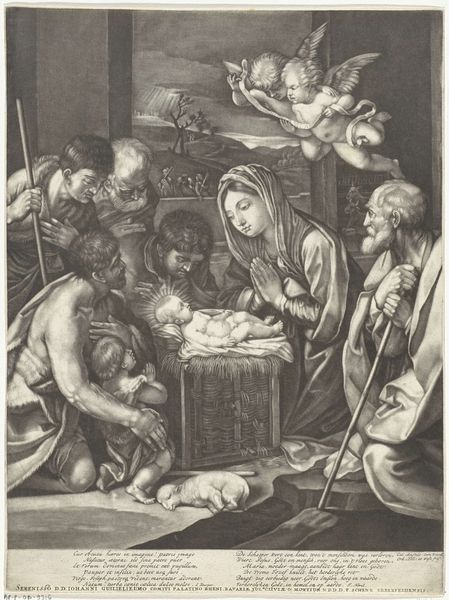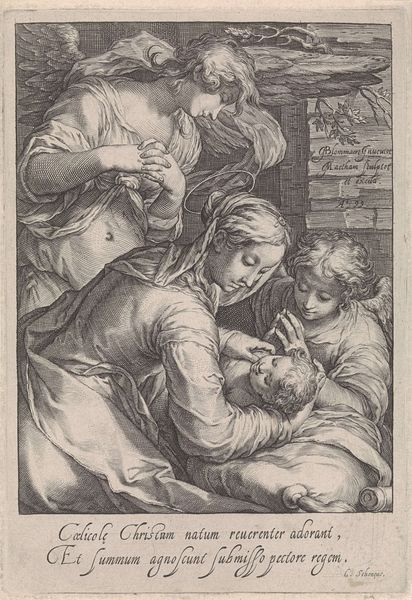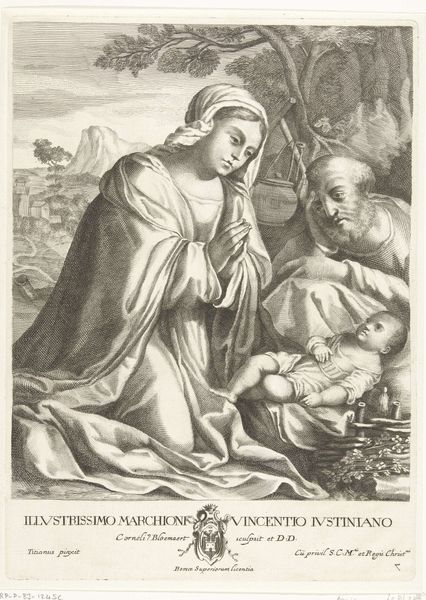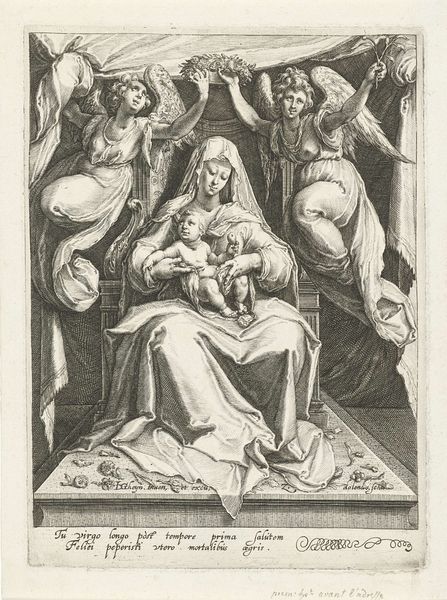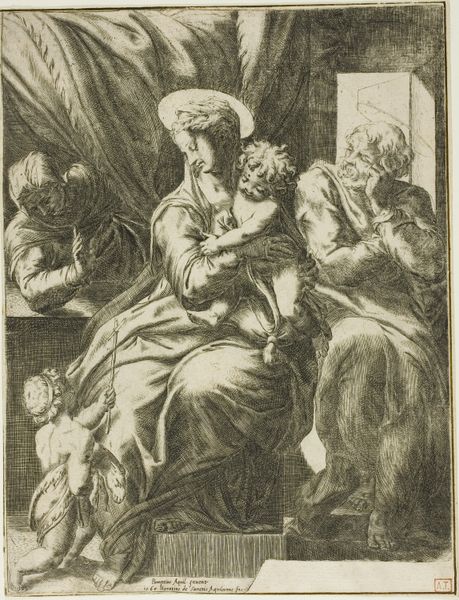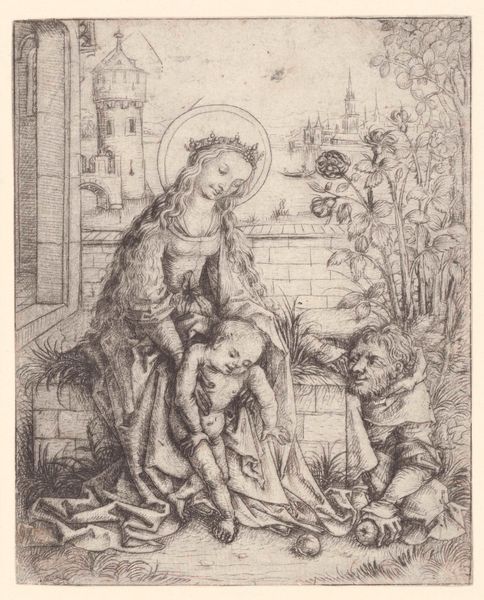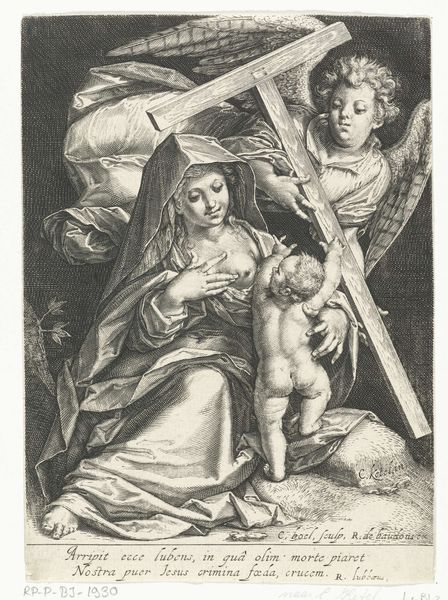
print, engraving
#
portrait
#
baroque
# print
#
figuration
#
line
#
history-painting
#
engraving
Dimensions: height 251 mm, width 185 mm
Copyright: Rijks Museum: Open Domain
Curator: Before us, we have an engraving titled “Heilige Familie met twee engelen,” or “Holy Family with Two Angels,” crafted between 1602 and 1605 by Jacob Matham. It resides here at the Rijksmuseum. What catches your eye first about it? Editor: The figures seem strangely static, yet there’s a real softness in the faces. Is this typical for art of this period? There’s a sense of serene observation… Curator: Yes, that's quite characteristic. Matham, working during the late Northern Renaissance transitioning into the Baroque period, was masterful with the burin. Notice how he employs the line? He uses densely packed lines to suggest shadow and form. It's a print, after all. What draws me in is how the symbolic narrative is revealed in the careful composition and gesture. Editor: And what symbols are really resonating with you today? How might the reception of this work have evolved over time? Curator: Well, the apple being offered by the angel, obviously hints at the Fall and the redemption that Christ, whom Mary cradles, will offer. The serene expressions evoke a sense of timelessness, reflecting the eternal nature of the divine family. Over time, cultural interpretation of this kind of image has varied based on societal attitudes about religion and gender roles. Now people bring their varied views on those ideas, affecting their feelings and reception of this image. Editor: Right. One wonders how political and social instability affected religious iconography in that era, whether artists overtly critiqued those conditions, or avoided conflict. Curator: Good point. The composition, while appearing traditional, incorporates a dynamic arrangement, the poses and figures flowing into each other and also interacting through gaze. What may at first glance appear formulaic might on second viewing seem very dynamic indeed! Editor: It feels less overtly propagandistic than other religious images I've studied from the period. Perhaps more for contemplation? Curator: That's what I'm thinking. The details reward that slower viewing. Looking more deeply, it's intriguing to see Matham blending devotion and technical skill into a moment frozen for centuries of cultural memory. Editor: Indeed. A reminder that art doesn’t merely reflect its time, but reshapes our understanding of the past. Curator: I agree completely! The artwork prompts us to ask questions about our beliefs, too.
Comments
No comments
Be the first to comment and join the conversation on the ultimate creative platform.
